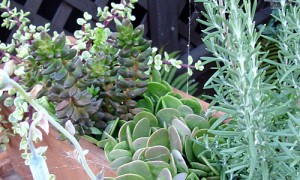The birds are chirping, the sun is rising ever earlier, and the last of winter’s touch is fading; that must mean it’s time for spring gardening in North Texas! Before you grab a spade and get to digging, ask yourself these questions:
- Have you tried planting your favorite blooms before, only to experience rapid wilting and dying by mid-July?
- Are you new to the DFW area and a bit alarmed by seeing what looks like clay once you get below your garden’s top-soil layer?
- Would you really just like neat flower beds that stay colorful and, well, alive through the whole season?
Mixing our difficult water table and clay soil issues here in DFW with Mother Nature’s tendency toward feast or famine — relentless spring rain followed by flash-drought summers — more care may be needed to plan your garden and really reap desirable results. Use this guide to get started.
Mother Nature Typically Knows Best
We gardeners suffer from a bit of hubris, imagining that our favorite variety of flora should be exactly what we plant and maintain. The unforgiving weather we experience, however, dictates otherwise. And it may really feel like a shot across your bow to have all of your carefully purchased and nurtured plants dying away while bothersome weeds flourish. But perhaps Mother Nature is simply giving you hints.
Native North Texas plants should be one of your first considerations this year — think about the lovely wildflowers you see in bloom in roadway medians and along the highway. Municipal crews foster those plantings for a reason: They are basically “set it and forget it” types that require little maintenance later and are almost sure to stay alive. Here are a few varieties to consider:
Amblyolepis setigera (Butterfly Daisy): What garden doesn’t need the instant cheerful pop of yellow these seemingly delicate daisies provide? Make no mistake, however. These plants are hardy and will provide long-lasting color.
Campsis radicans (Trumpet Vine): Have you ever seen the gloriously triumphant orange vines growing along the outside of neighborhood homes? It’s the trumpet vine and it’s the ultimate set and forget vine for Texas. Simply give it ample space to grow when you first plant and it will come back year after year — and it enjoys a long blooming season, to boot!
Liatris elegans (Pink Blazing Star): Pink may be a bit of a misnomer, as this pretty and slender plant tends more toward purple. Either way, your garden will love these long blooms that should be planted in bunches to take full advantage of the color provided when blooming.
Drought Resistance Is Key
The two most important words to find when at your favorite nursery are “drought resistant.” That’s important for two reasons. First, we all know the drought is going to come; it’s just a matter of when. And second, most local cities have now adopted year-round watering restrictions. So unless you’re on well water, you probably only have a few days a week you can legally water your lawn and garden.
Try these additional varieties:
Lantana urticoides (Texas Lantana): This shrub will happily spread to fill a large garden area with vivid ball-shaped blooms.
Penstemon baccharifolius (Rock Beardtongue): You need this shrub-like flower simply for its funny name — and if it has “rock” in the title, you know it’ll grow nearly anywhere hot, without needing a ton of water. Like hummingbirds? This flower will attract them in droves.
For more drought-friendly plants to add to your spring gardening list, visit Wildflower.org’s Drought Resistant page or Texas A&M’s Native Shrubs site.
[cf]skyword_tracking_tag[/cf]






